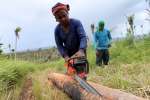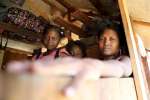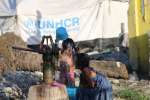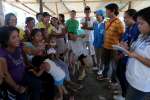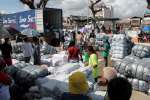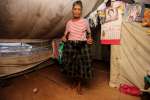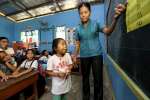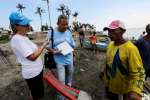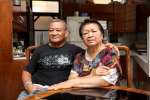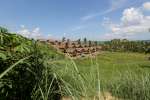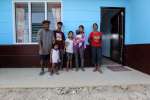1-year on from Typhoon Haiyan, thousands of people still rebuilding lives
Briefing Notes, 7 November 2014
This is a summary of what was said by UNHCR spokesperson Adrian Edwards – to whom quoted text may be attributed – at the press briefing, on 7 November 2014, at the Palais des Nations in Geneva.
A year ago tomorrow (8 November) Typhoon Haiyan – one of the strongest tropical cyclones on record anywhere – ran ashore in the central Philippines, causing wide devastation and killing at least 6,300 people. A year on, and the recovery work still goes on. While most of the 4.1 million people who were displaced have either returned home to rebuild, or been relocated, solutions are still needed for some 20,000 people either living in shelters or – in a small number of cases – with host families.
Together with the Philippines Government, UNHCR has brought help over the past year to more than 700,000 of the most vulnerable typhoon survivors, providing vital relief aid including tents, plastic sheets, blankets, hygiene kits, jerry cans, kitchen sets and solar lanterns. Help has also come from the private sector: A Singaporean franchise owner of furniture company IKEA donated mattresses for hospitals, Japan's UNIQLO provided clothing, while Swedish firm Husqvarna donated chainsaws to clear felled trees that were later used to rebuild homes.
In the early phase of the recovery effort, UNHCR started a free mobile civil registration project to reconstitute lost civil records and issue legal documentation – important so that people can access state benefits. Some 80,000 documents have been issued including birth, marriage, and death certificates. UNICEF will pick up the project and scale up coverage further in the coming months.
UNHCR's focus today is the situation of the 20,000 people still living in 56 displacement sites across typhoon-affected areas. A recent protection assessment found that people still need help with physical dwellings, water and sanitation, hygiene, as well as land and property issues.
In Tacloban, Eastern Samar and some other areas, local authorities have provided temporary shelters and explained to people that they will have to stay there for two years while the search to find permanent relocation continues. These efforts are complicated by the shortage of suitable and the lack of services to make relocation sustainable.
UNHCR and its partners have been monitoring the situation of the families in the remaining displacement sites. We've worked to strengthen the government's capacity to ensure that basic services are provided and that the rights of the displaced people – including their right to voluntary return or relocation – are respected.
In areas that were immediately impacted by Typhoon Haiyan, UNHCR has since handed over its work to the government, local authorities, NGOs and development organizations.
At the same time, we continue to highlight the urgent need for the Philippines to adopt legislation to protect the rights of internally displaced people – in what is one of the world's most natural disaster-prone countries. The bill would also provide a much-needed legislative framework to allow state authorities to protect and assist people displaced as a result of the decades-long conflict in the southern Philippines.
The passage of this legislation would be very timely as the country welcomes crucial steps in attaining sustainable peace in the southern Philippines. These steps could pave the way for millions of citizens to rebuild their lives through local settlement, voluntary return or relocation throughout Mindanao.
For more information on this topic, please contact:
- In Tacloban: Keneath Bolisay, +63 915 592 1568
- In Manila: Marie Michelle Liquigan, +63 918 920 8765
- In Bangkok (regional office): Vivian Tan, +63 818 270 280
- In Geneva: Babar Baloch, +41 79 557 9106





